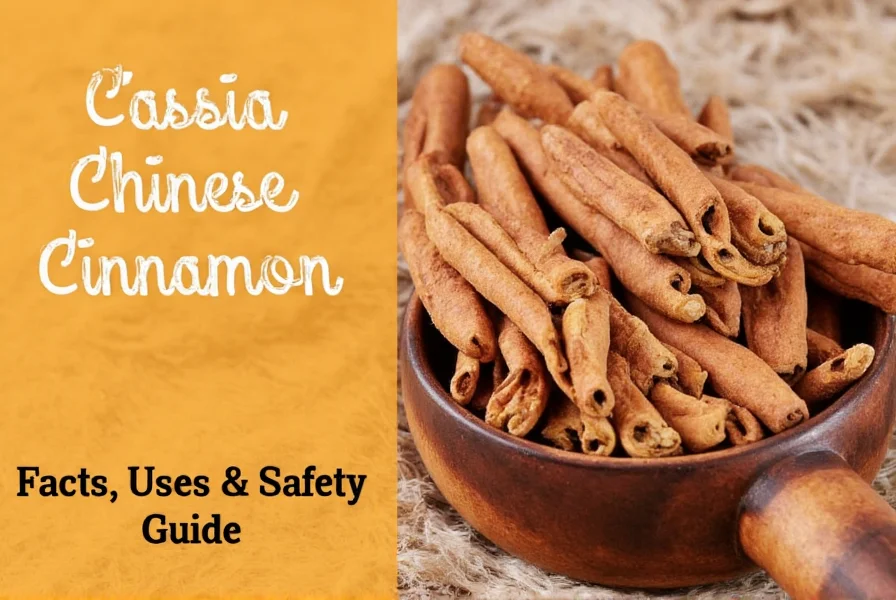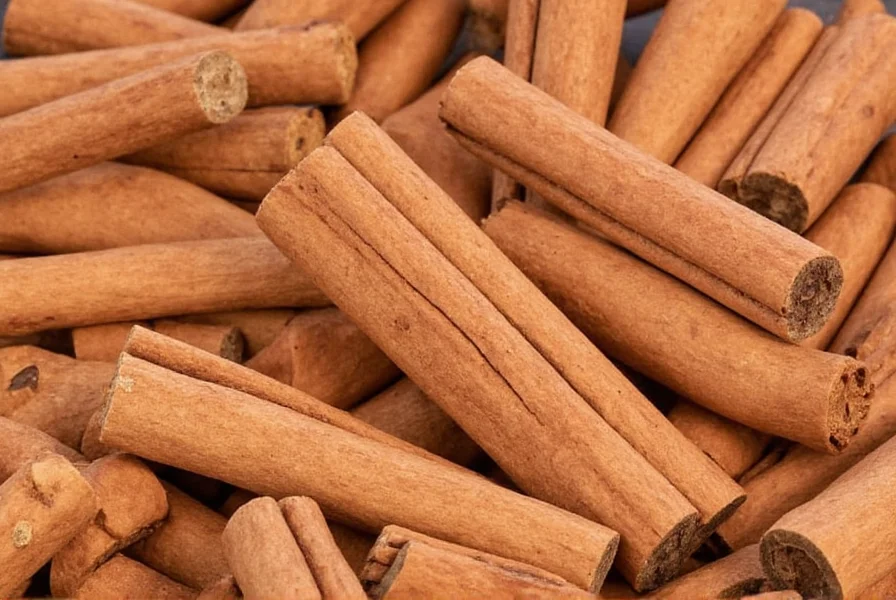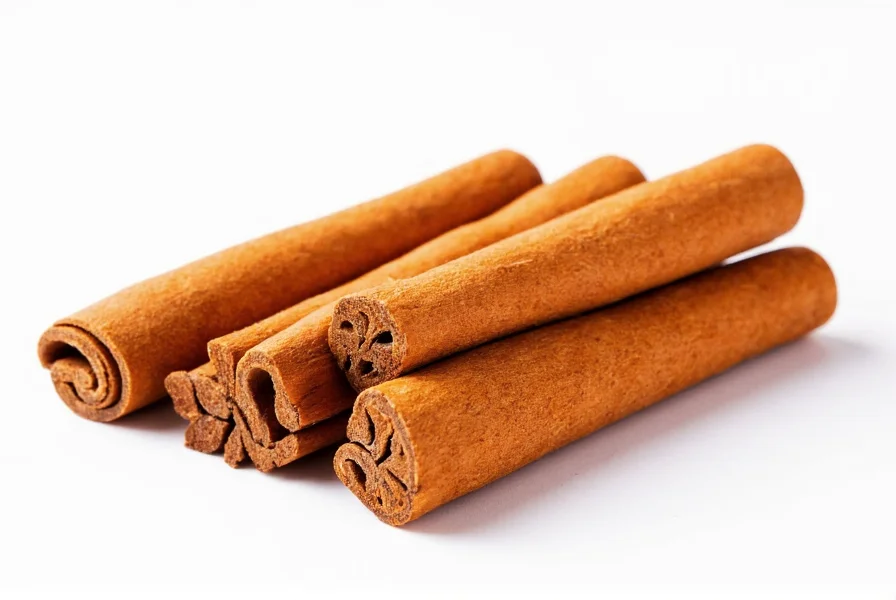Cassia Chinese cinnamon has been used for thousands of years in traditional Chinese medicine and culinary practices. This distinctive spice, often simply labeled as “cinnamon” in grocery stores, represents approximately 90% of the cinnamon consumed in the United States. Understanding its unique properties helps consumers make informed choices about its use in cooking and potential health applications.
Botanical Origins and Production
Cassia Chinese cinnamon comes from the Cinnamomum cassia tree, primarily cultivated in China, Vietnam, and Indonesia. The harvesting process involves stripping the inner bark from mature trees, which naturally curls into the familiar “quills” or sticks as it dries. Unlike Ceylon cinnamon, which forms multiple thin layers, cassia bark creates a single, thick, hard tube with a rough exterior.
| Characteristic | Cassia Chinese Cinnamon | Ceylon Cinnamon |
|---|---|---|
| Bark Thickness | Thick, hard single layer (2-3mm) | Thin, multiple delicate layers (0.5mm) |
| Flavor Profile | Strong, spicy, intense | Milder, sweeter, more complex |
| Coumarin Content | High (2,500-8,000 ppm) | Very low (50-150 ppm) |
| Price Point | More affordable | More expensive |
Culinary Applications of Cassia Chinese Cinnamon
The bold flavor profile of cassia Chinese cinnamon makes it ideal for dishes requiring a pronounced cinnamon presence. Professional chefs often prefer it for:
- Baking hearty desserts like apple pie, snickerdoodles, and cinnamon rolls
- Creating spice blends for curries, garam masala, and Chinese five-spice powder
- Brewing robust chai teas and mulled wines
- Adding depth to savory dishes like braised meats and stews
When substituting cassia for Ceylon cinnamon in recipes, use approximately 25% less due to its more intense flavor. This adjustment prevents overpowering delicate dishes while maintaining the desired cinnamon character.

Health Benefits and Scientific Research
Multiple studies have investigated the potential health benefits of cassia Chinese cinnamon, particularly regarding:
- Blood sugar regulation: Research suggests cinnamon may improve insulin sensitivity, though most studies use cassia specifically due to its higher concentration of active compounds.
- Antioxidant properties: Cassia contains significant levels of polyphenols that combat oxidative stress.
- Anti-inflammatory effects: Laboratory studies indicate potential reduction in inflammatory markers.
However, it's crucial to understand that most clinical evidence comes from concentrated extracts rather than culinary usage amounts. Consuming cassia Chinese cinnamon as a regular spice provides minimal therapeutic benefit compared to supplement forms used in research.
Safety Considerations and Coumarin Content
The most significant concern with regular cassia Chinese cinnamon consumption is its naturally high coumarin content. Coumarin, while giving cassia its distinctive aroma, can cause liver damage in sensitive individuals when consumed in large quantities over time.
European Food Safety Authority guidelines recommend a maximum daily intake of 0.1 mg coumarin per kilogram of body weight. For a 60 kg (132 lb) adult, this translates to approximately:
- 1 teaspoon (2.5g) of ground cassia Chinese cinnamon
- 4-6 cinnamon sticks (5g total)
Individuals with liver conditions or those consuming cinnamon supplements should consult healthcare providers about appropriate consumption levels. Those seeking cinnamon’s potential health benefits with minimal coumarin exposure might consider Ceylon cinnamon as an alternative.

Selecting and Storing Quality Cassia Chinese Cinnamon
When purchasing cassia Chinese cinnamon, look for these quality indicators:
- Color: Deep reddish-brown (faded color indicates age)
- Aroma: Strong, sweet-spicy scent when broken
- Texture: Brittle enough to snap cleanly
- Origin labeling: Specific regional designations like “Saigon cinnamon” (Vietnamese cassia) often indicate higher quality
Store cinnamon sticks in airtight containers away from light and heat for up to 3-4 years. Ground cinnamon retains optimal flavor for 6-12 months. Proper storage preserves the volatile oils responsible for cassia Chinese cinnamon’s distinctive aroma and flavor.
Conclusion
Cassia Chinese cinnamon remains a kitchen staple worldwide due to its bold flavor, versatility, and affordability. Understanding the difference between cassia and Ceylon cinnamon helps consumers make informed choices based on their culinary needs and health considerations. While both varieties offer unique benefits, recognizing cassia Chinese cinnamon’s higher coumarin content allows for responsible consumption that balances flavor enjoyment with health awareness. For most people using cinnamon as a regular spice in normal culinary amounts, cassia presents no significant health risks while delivering that beloved warm, spicy-sweet character to countless dishes.
Frequently Asked Questions
What's the difference between cassia Chinese cinnamon and regular cinnamon?
"Regular" cinnamon in most North American and European supermarkets is actually cassia Chinese cinnamon. The key differences include: cassia has thicker, harder bark sticks; stronger, spicier flavor; higher coumarin content; and comes from Cinnamomum cassia trees primarily grown in China and Vietnam, whereas true cinnamon (Ceylon) comes from Cinnamomum verum trees in Sri Lanka and has multiple thin layers, a sweeter flavor, and much lower coumarin levels.
Is cassia Chinese cinnamon safe for daily consumption?
Yes, when consumed in typical culinary amounts. The safety concern with cassia Chinese cinnamon relates to its coumarin content. For most adults, consuming up to 1 teaspoon (2.5g) of ground cassia or 4-6 cinnamon sticks daily is considered safe. Those with liver conditions or taking certain medications should consult healthcare providers, and people using cinnamon supplements should be particularly mindful of total coumarin intake.
Can I substitute cassia Chinese cinnamon for Ceylon cinnamon in recipes?
Yes, but with adjustments. Because cassia Chinese cinnamon has a stronger, more intense flavor than Ceylon cinnamon, use about 25% less cassia when substituting. For example, if a recipe calls for 1 teaspoon of Ceylon cinnamon, use approximately 3/4 teaspoon of cassia. This prevents the cinnamon flavor from overwhelming more delicate dishes while maintaining the desired spice character.
Why does cassia Chinese cinnamon have higher coumarin content than Ceylon cinnamon?
Coumarin is a naturally occurring compound in cinnamon that varies by species. Cassia Chinese cinnamon (Cinnamomum cassia) naturally produces significantly more coumarin (2,500-8,000 parts per million) as part of its chemical composition compared to Ceylon cinnamon (Cinnamomum verum), which contains only 50-150 ppm. This difference stems from the distinct genetic makeup of the two tree species and their evolutionary development in different environments.
How can I tell if my cinnamon is cassia Chinese cinnamon or Ceylon cinnamon?
Examine the physical characteristics: cassia Chinese cinnamon forms thick, hard single-layer sticks (2-3mm thick) that are difficult to break and have a rough exterior with one tight scroll. Ceylon cinnamon creates thin, brittle, multi-layered sticks (about 0.5mm thick) that resemble cigar tubes and break easily. Cassia also has a stronger, spicier aroma compared to Ceylon's sweeter, more delicate scent. In the United States and Europe, unlabeled “cinnamon” is almost always cassia.











 浙公网安备
33010002000092号
浙公网安备
33010002000092号 浙B2-20120091-4
浙B2-20120091-4